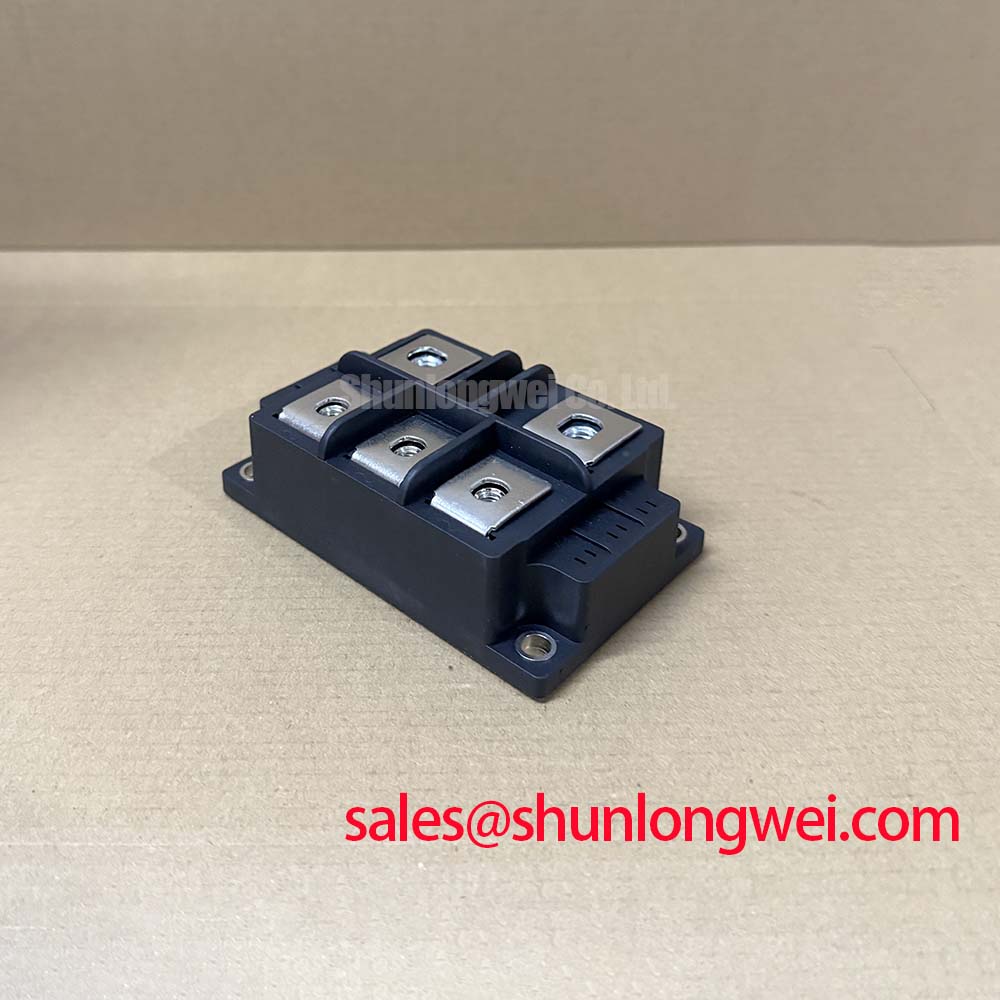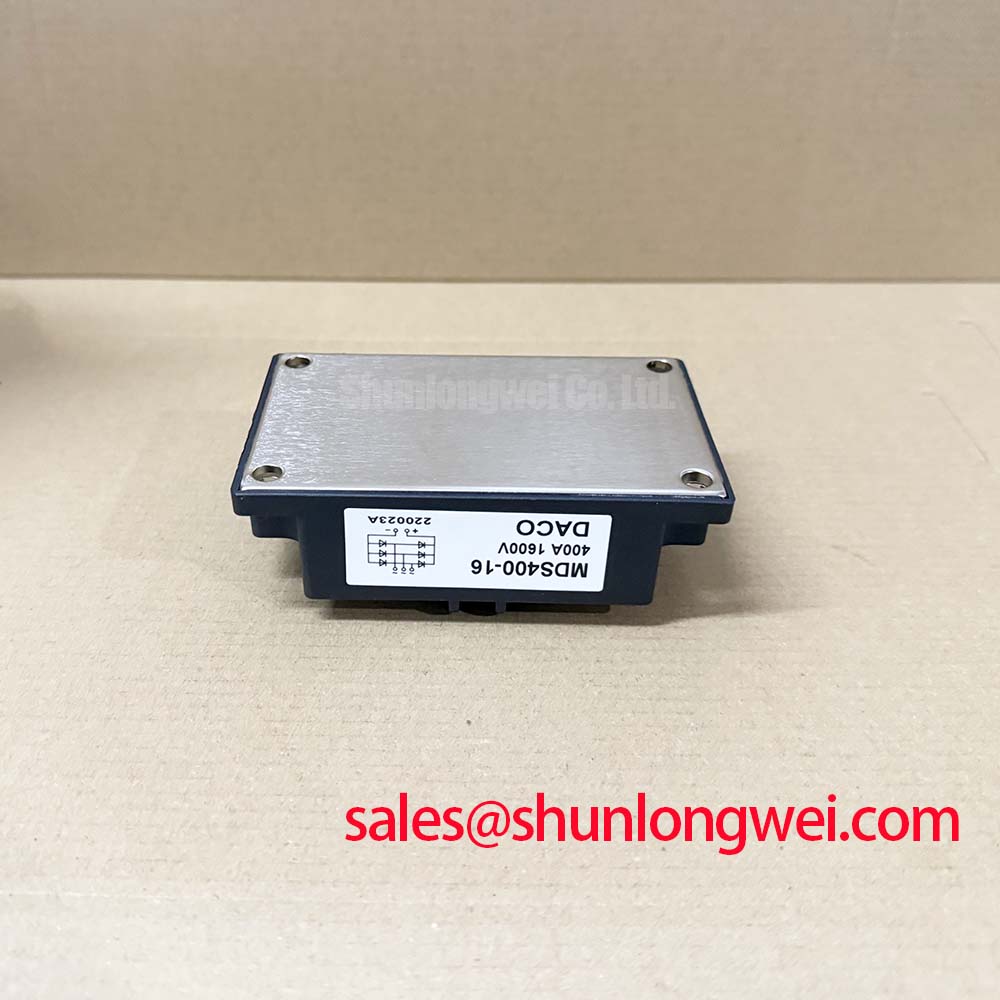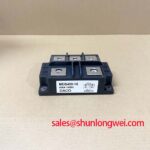Content last revised on November 15, 2025
MDS400-16 Diode Module: Specs, Thermal & Reliability Data
Engineered for Thermal Stability and High-Current Applications
In an industrial landscape that demands continuous operation and power efficiency, the SanRex MDS400-16 Diode Module emerges as a foundational component for robust power rectification. It delivers exceptional operational longevity and thermal stability in high-power systems through a design focused on superior surge handling and low thermal resistance. With core specifications of 1600V | 400A | Rth(j-c) 0.065°C/W, this module provides two critical engineering benefits: an enhanced system lifespan and simplified thermal management. Its electrically isolated baseplate improves thermal transfer and simplifies assembly, directly contributing to greater system-level reliability and a lower total cost of ownership.
Powering High-Demand Systems with Thermal Integrity
The MDS400-16 diode module is engineered for AC-to-DC power conversion stages where dependability under heavy loads is a primary design criterion. Its electrical and thermal characteristics make it an excellent fit for a range of demanding industrial applications.
- Industrial Motor Drives: Provides the main input rectification for variable frequency drives (VFDs) and servo drives, offering the high surge tolerance needed to withstand inductive load switching and line voltage fluctuations.
- Welding Power Supplies: Delivers the stable, high-current DC power essential for arc welding processes, where its robust thermal performance ensures consistent operation during prolonged use.
- Uninterruptible Power Supplies (UPS): Serves as a reliable front-end rectifier in large-scale UPS systems, ensuring that critical infrastructure remains powered during grid instabilities. The module's low thermal resistance is key to maintaining efficiency in these always-on systems.
- Battery Charging Systems: Ideal for high-capacity industrial battery chargers, including those for forklifts and electric vehicles, where it can efficiently handle high continuous currents. For systems requiring even greater current handling, the MDS500A/1600V offers a higher power alternative within a similar architecture.
Best Fit: For 380-480V line rectification requiring high fault tolerance, the MDS400-16's 5500A surge rating makes it a superior choice for protecting downstream systems.
A Data-Centric View for Your Rectifier Evaluation
To support your design and procurement decisions, this section provides a factual comparison based on key performance indicators derived directly from the component's datasheet. This data facilitates an objective evaluation against typical rectification solutions.
| Parameter | SanRex MDS400-16 | Typical Non-Insulated Module | Engineering Implication |
|---|---|---|---|
| Peak Forward Surge Current (IFSM) | 5500 A | ~4000 A | Provides a significantly larger safety margin against catastrophic failure from inrush currents or line faults, enhancing system survivability. |
| Thermal Resistance (Rth(j-c) per element) | 0.065 °C/W | Often higher | Enables lower silicon operating temperatures under the same load, which directly correlates to a longer operational lifespan and higher reliability. |
| Mounting Base Design | Electrically Insulated (2500V) | Requires external insulating pad | Simplifies mechanical assembly, eliminates the cost of an extra component, and creates a more direct and reliable thermal path to the heatsink. |
Core Specifications of the MDS400-16 Module
The following parameters are central to the performance of the MDS400-16. This selection is intended to provide a quick reference for system architects and design engineers during the initial evaluation phase. For comprehensive details, please refer to the official datasheet.
| Parameter | Value |
|---|---|
| Repetitive Peak Reverse Voltage (VRRM) | 1600 V |
| Average Forward Current (IF(AV)) @ Tc=85°C | 400 A |
| Peak Forward Surge Current (IFSM), 50Hz half-sine | 5500 A |
| Thermal Resistance, Junction-to-Case (Rth(j-c)) per element | 0.065 °C/W |
| Isolation Voltage (Visol), AC 1 minute | 2500 V |
| Operating Junction Temperature (Tj) | -40 to +150 °C |
Download the Datasheet for complete specifications and performance curves.
Inside the MDS400-16: A Focus on Thermal Performance
A component's datasheet values are pivotal, but understanding their engineering impact is what enables superior system design. The MDS400-16 incorporates specific design choices that directly enhance thermal management and long-term reliability.
The Critical Role of Low Thermal Resistance
The Thermal Resistance (Rth) of a module is analogous to a traffic bottleneck; it dictates how easily heat can escape the active silicon chip. A low Rth(j-c) of 0.065°C/W acts like a wide, multi-lane highway for heat, preventing thermal 'traffic jams' that elevate junction temperatures and accelerate device aging. What is the main benefit of low Rth(j-c)? It ensures lower chip temperatures, extending the module’s operational life. This efficiency allows for smaller heatsink designs or provides a greater thermal margin in high ambient temperature environments.
The Advantage of an Integrated Insulated Base
The MDS400-16 features an integrated alumina ceramic substrate that provides both electrical isolation and a path for thermal dissipation. Why use an insulated baseplate? It simplifies heatsink mounting and improves overall thermal transfer reliability. By eliminating the need for external insulating sheets and thermal grease, this design reduces assembly steps and removes variables that can compromise thermal performance over time, such as material degradation or improper mounting pressure. Further insights into managing component health can be found in our guide to IGBT failure analysis, which covers principles applicable to all power modules.
Aligning with Industrial Demands for Uptime and Efficiency
The design philosophy behind the SanRex MDS400-16 directly addresses key strategic objectives in modern industrial systems. Its features translate into tangible advantages that extend beyond raw electrical performance, impacting everything from system design to long-term operational costs.
The emphasis on low thermal resistance and high surge immunity supports the industry-wide push for a lower Total Cost of Ownership (TCO). By engineering a component that runs cooler and withstands electrical stress, the probability of premature failure is reduced, minimizing costly downtime and maintenance cycles. This focus on durability is essential as automation and electrification continue to expand into more demanding and remote applications where reliability is paramount. The module's inherent robustness provides designers with the confidence to build power systems that are not just powerful, but fundamentally dependable.








